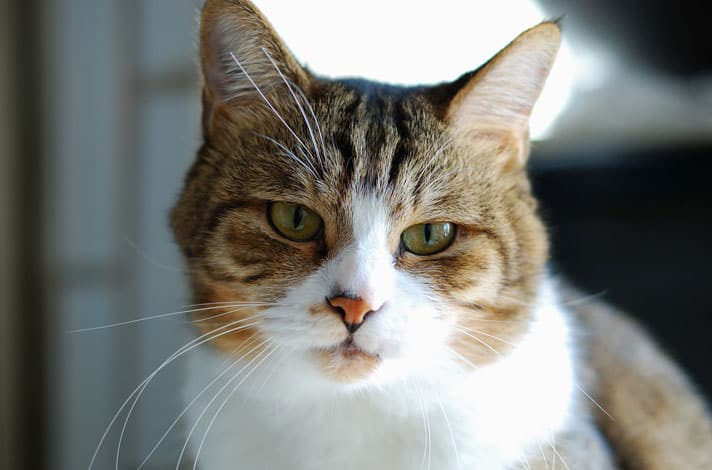Q.
I have a male cat that is about 10 or 11 years old and he has been fixed since I acquired him in 1999. He has started to pee in my house but always in the same spots. Why would he do this? I have not gotten any new animals. I did have him at the vet’s a month ago but was told it wasn’t a urinary tract infection. Just about two weeks ago I noticed he had urinated on my bathroom floor and when I wiped it up, the color looked pinkish. He doesn’t act any different, but I have been watching him. Again today I found where he peed and it had a light pinkish color. Can you please tell me what is going on with my cat?
A.
Both behavioral disorders and medical disorders can cause cats to urinate in inappropriate places. The fact that your cat has blood-tinged urine is highly suspicious for a medical cause.
Cats are sometimes taken to a veterinarian’s office because their owner has noticed some abnormal urinary behavior, such as straining to urinate, increased frequency of urination, urinating in unusual places, and sometimes blood in the urine. We call this disorder feline lower urinary tract disease (FLUTD).
The term FLUTD is really a non-specific term that basically says that something abnormal is going on in the cat’s urinary tract. There are several possible disorders, all of which can cause the same clinical signs. To figure out which one it is, diagnostics need to be performed. At minimum, a urinalysis, urine culture, and X-ray should be performed. Occasionally, other diagnostics, such as ultrasound and blood work, may be necessary.
Crystals in the urine, which can be detected on urinalysis, can irritate the bladder lining and cause cystitis (bladder inflammation), resulting in the clinical signs described above. In male cats like yours, however, crystals are more of a concern, because the crystals can coalesce and form sand, and the sand can combine with protein and mucus in the bladder to form a plug, which can obstruct the urethra. Urethral obstruction is a life-threatening emergency.
Urinary tract infections are another potential cause of your cat’s clinical signs. If the urine culture shows bacteria in the urine, then your cat has a urinary tract infection, and antibiotic therapy is warranted.
A bladder stone is another potential cause of bloody urine. An X-ray should be taken as part of the diagnostic workup, to see if a stone is present in the bladder. Surgical removal is usually necessary to rid the cat of the stone, however, some stones can be dissolved slowly by feeding the cat a special prescription cat food.
In many cases, no stone is found, no crystals are seen, and no bacteria are present; the only abnormality is blood in the urine. We call this “idiopathic cystitis,” which means cystitis (bladder inflammation) of no known cause. This is perhaps the most common cause of FLUTD, and the most frustrating for veterinarians, because there is still no consensus as to the best treatment for this condition.
Clearly, you need to take your cat to your veterinarian to determine the exact cause of your cat’s FLUTD, so that appropriate treatment can be started.
By: Arnold Plotnick, DVM
Featured Image:via Pixabay
Taking Care of Your Cat's Health
Share:









